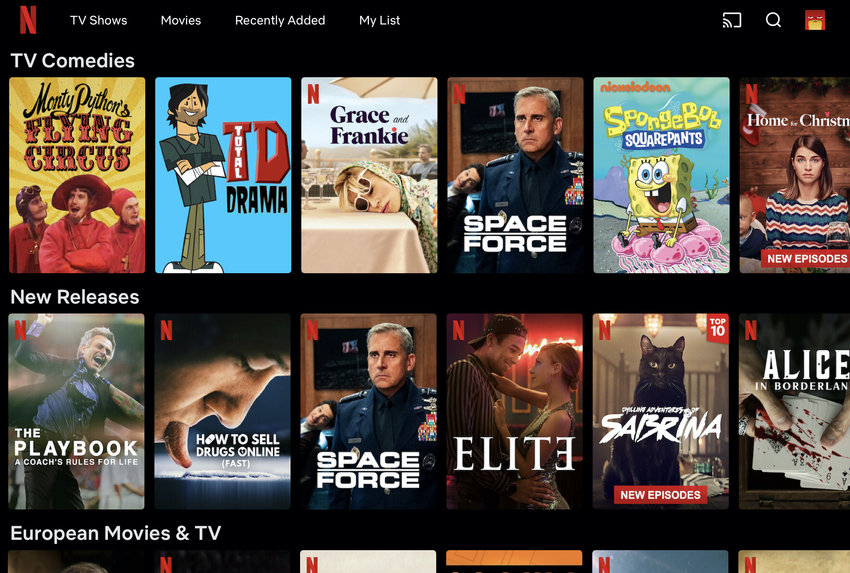Drive Success and Avoid Costly Mistakes By Getting Your UX Research Right!

This article goes beyond the question of why you need to do user research but skips straight to why you need to get it right. User research, often abbreviated as UXR, is the cornerstone of creating exceptional user experiences. It’s the compass that guides product design and development and ensures that it aligns with the needs and desires of the people who use it. Without thorough user research, you’re essentially building a product on a shaky foundation of assumptions. In this blog post, we’ll explore why it’s crucial to get user and customer research right, how it can impact retention and growth using real-world examples, and what happens when you get it wrong. We’ll also delve into the art of asking the right UXR questions and the significant cost-benefit it brings to businesses.
UXR results in Retention
Retention is a key metric for any product or service, and user experience research plays a vital role in achieving it. Consider the case of Netflix, the streaming giant that revolutionised the way we consume entertainment. In its early days, Netflix had a user recommendation system that wasn’t appreciated by its users. People didn’t understand why certain content was being recommended to them.

However, Netflix recognised the importance of UXR and decided to make strategic changes. They introduced a clear message explaining why certain content was recommended. This small but effective tweak transformed the recommendation engine into a significant driver of retention. Users now saw value in the recommendations, and this led to longer subscriptions and increased customer loyalty.
The lesson here is that user experience research helps identify pain points and low-hanging fruit that, when addressed, can significantly improve a product’s success. It’s not just about the product; it’s also about conveying its value to users effectively. Netflix’s experience underscores the importance of aligning your value proposition with user expectations, which can be achieved through UXR.
UXR results in Growth
User experience research isn’t only about retaining existing customers; it’s also a catalyst for growth. In 2008, Jared Spool conducted user research that had a profound impact on an e-commerce website. They replaced the traditional “Register” button with a more user-friendly “Continue” button. This change, based on UXR insights, made it clear that customers could make a purchase without creating an account first.
The results were impressive. The simplified interface and user-centric approach led to a significant increase in conversions. More users were willing to complete their purchases, leading to higher revenues and business growth. This example illustrates how UXR can directly contribute to a company’s bottom line by improving conversion rates and driving revenue growth.
UXR results in a Stronger Design Process
The examples that we’ve explored have been insights from established giants in their respective industries, practically with a blank check to spend on their user research. But what is user research’s impact on prototyping?
We partnered with global logistics firm Seven Seas Worldwise to improve their online quote calculator. This crucial part of the Seven Seas experience was often the first touchpoint for Seven Sea’s customers. It also hadn’t been updated in years so it was due for a redesign.
The opportunity that we wanted to capitalise on was making sure the UI mirrors user behaviour. This was accomplished through user testing. Without these three weeks of critical testing, we would’ve designed and delivered an interface that didn’t build trust or help users well.
What Happens When You Get UXR Wrong
Getting user and customer research wrong can be costly. Consider the case of Walmart, one of the world’s largest retailers. They conducted customer surveys but asked the wrong questions, focusing on attitudinal rather than behavioural information. As a result, they reduced shelf space by 15% based on misleading insights from these surveys.
Over the next nine years, Walmart lost nearly a staggering $2 billion of missed-out profit. Turns out, customers wanted that 15%. This highlights the critical distinction between customer research, which focuses on what people say they want, and user research, which delves into how people actually behave when using a product or service. What should have Walmat done instead? Ask better survey questions.
How to Ask the Right UXR Questions
Asking the right UXR questions is a skill that can save businesses from costly blunders and unlock significant opportunities for growth. It’s about adopting a customer-centric focus, unearthing valuable data that can benefit all departments, and securing stakeholder buy-in. Techniques such as usability testing, surveys, and user interviews can be employed to gather critical insights.
Formatting good user experience research (UXR) questions involves several key steps, as outlined in the provided transcript:
• Start with Context: Begin by setting the context and introducing the purpose of the user interview or research.
• Create a Scenario or Case Study: Develop a scenario or case study related to the product or service you are researching. This helps participants relate to the topic and provides a concrete context for your questions.
• Use W-Questions: Frame your questions using words that start with “W,” such as “what,” “when,” “where,” “which,” and “who.” These questions are often open-ended and encourage participants to provide detailed responses.
• Avoid “Why” Questions with Caution: Be cautious when using “why” questions, as they can sometimes make participants feel pressured to provide an answer, even when they don’t have one. Use them sparingly and offer follow-up questions to give participants room to think.
• Content Mapping and Content Mining: Differentiate between content mapping and content mining questions. Use content mapping questions to explore broad topics and content mining questions to delve deeper into specific areas of interest that arise during the interview.
• Probing and Specifying Questions: Encourage participants to provide concrete and specific information by asking probing questions like “What concretely did you do at this point?” and specifying questions like “Can you give me an example of what happened after watching the video?”
• Embrace Silence: Understand the value of silence in interviews. Allow participants time to think and reflect before responding. Silence can lead to more thoughtful and insightful answers.
• Avoid Leading Questions: Steer clear of leading questions that imply specific answers you want to hear. Leading questions can bias participants and hinder unbiased data collection.
• Reverse Leading Questions: If you catch yourself asking a leading question, make a mental note and later ask a question that goes in the opposite direction to see if participants reconsider their initial responses.
• Avoid Hypothetical Questions: Avoid asking hypothetical questions, as they may not elicit trustworthy responses. Instead, focus on questions that relate to specific past experiences or actions.
• Be Concrete and Specific: Strive for questions that elicit concrete and specific responses rather than abstract or general answers. Specific questions tend to yield more valuable insights.
• Listen Actively: Practice active listening by summarising what participants say without adding your interpretation. Stick closely to their words and encourage them to share their perspectives.
• Allow Participants to Speak: When interviewing participants about topics they are interested in, provide them with ample time to express themselves without interrupting too much. This helps gather rich, unfiltered insights.
Helpful tip: There’s a subtle art to interrupting users who may be giving long-winded unhelpful answers. There are a few ways to deal with this correctly but what has worked for me in the past is a simple process of
“This is what our conversation is going to cover today”
Outline the interview topics.
Follow up with “I may have to cut you off to make sure we cover everything here today.”
This helps set expectations early on.
Should excessive-not-relevant-to-the-interview-talking happen, a nice redirect is helpful in the form of
“This is an important point and I’d like to know more about this. I am noting it down and (in the interest of time) we’ll come back to this once we cover all the questions. Is that okay?”
Use this script at your discretion. Sometimes user rambling reveals rich emotional gems that require more mining and other times you go bust.
Business Value of UXR
The cost-benefit of UXR is substantial. It helps businesses make informed decisions, reduce development costs, improve customer satisfaction, and drive growth. By asking the right questions, companies can align their products and services more effectively with user needs and preferences.
“Worst” case scenario is that your organisation doesn’t need the UXR. Your company is that one in a million with an omnipresent product/UX design sense that can practically read the minds of your users and customers in any state of your product. The hours of interviews, synthesis, analysis and dialogue revealed data you already knew. In this case, this is a testament to your organisation’s user insight and design instincts. However for the rest of us mere mortals, this investment is necessary and has a huge ROI of 9900%.
Conclusion
In conclusion, user and customer research is not just a nice-to-have; it’s a strategic imperative for businesses. It’s a competitive advantage that can boost retention, drive growth, and prevent costly mistakes. Whether you’re a streaming giant like Netflix, an e-commerce platform, or a retail giant like Walmart, getting UXR right can make the difference between success and failure.
To harness the power of UXR, remember to focus on your users, not just their words but also their actions. Use the insights you gain to make strategic changes, and don’t shy away from learning from your failures. By doing so, you’ll position your business for long-term success and ensure that your products and services continue to meet the evolving needs of your audience.
In short, do yourself a favour and design around user behaviour.
Thanks to CardMapr.nl on Unsplash for his photo.